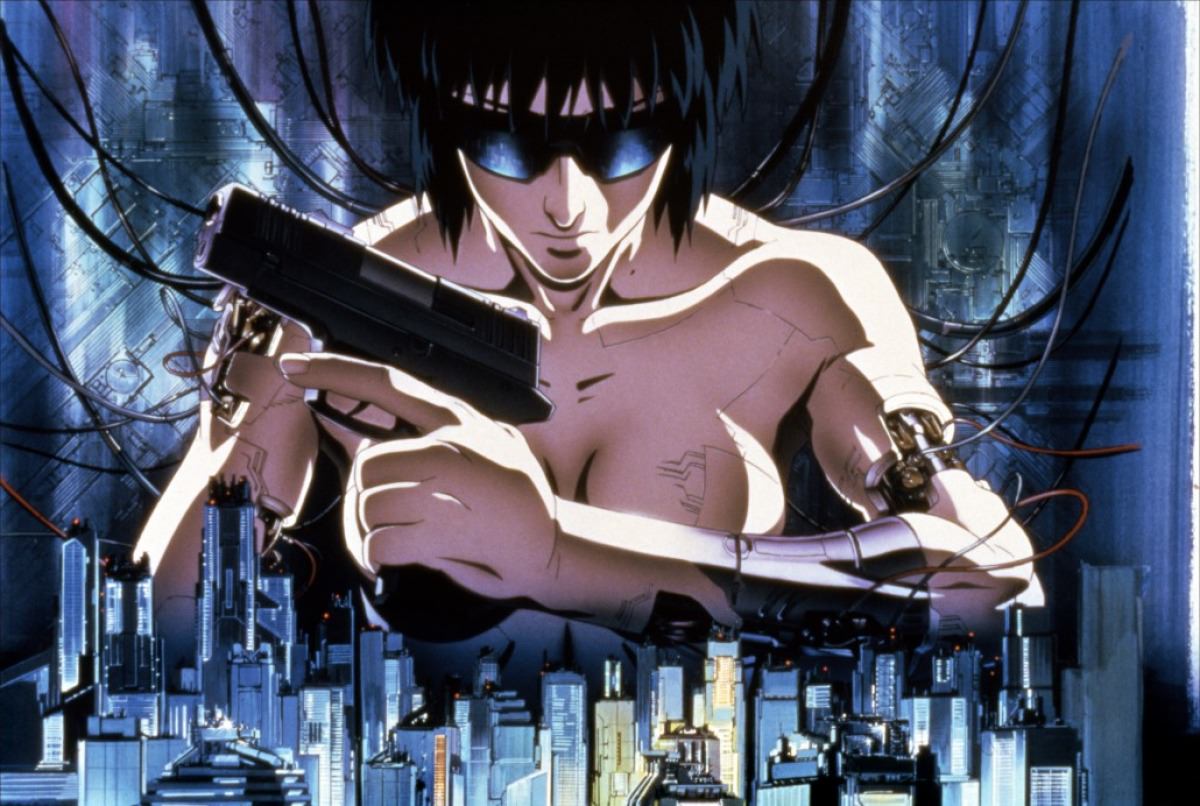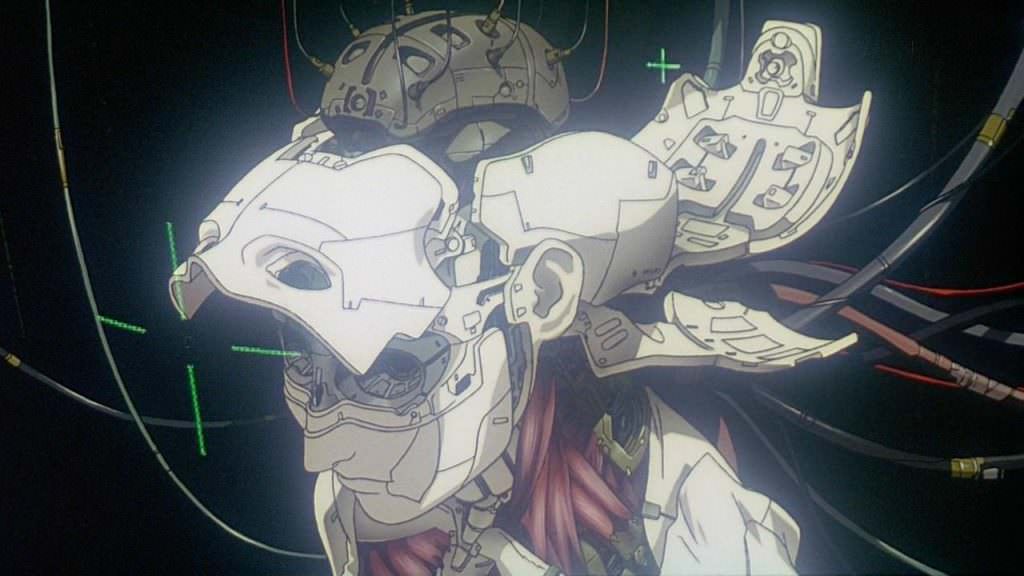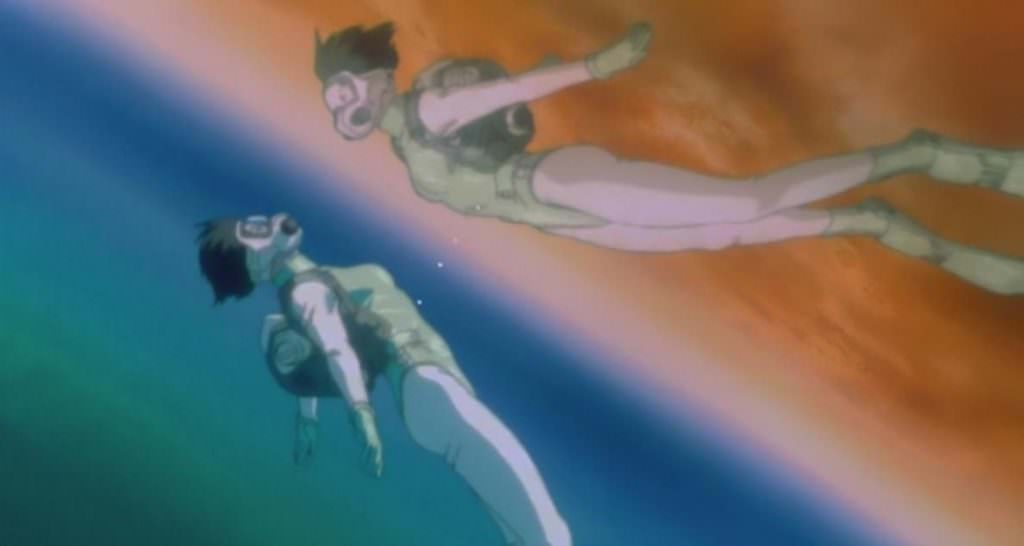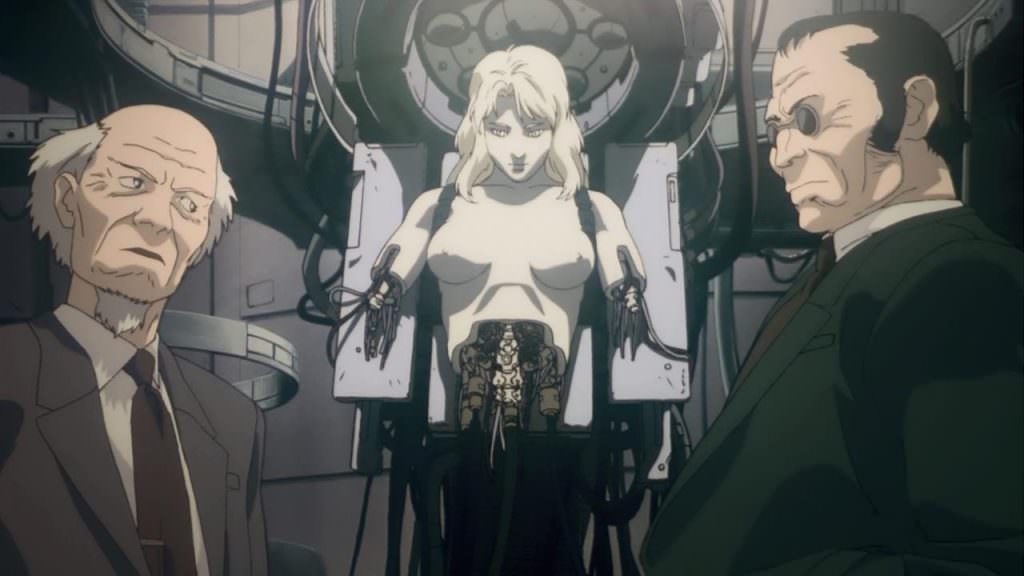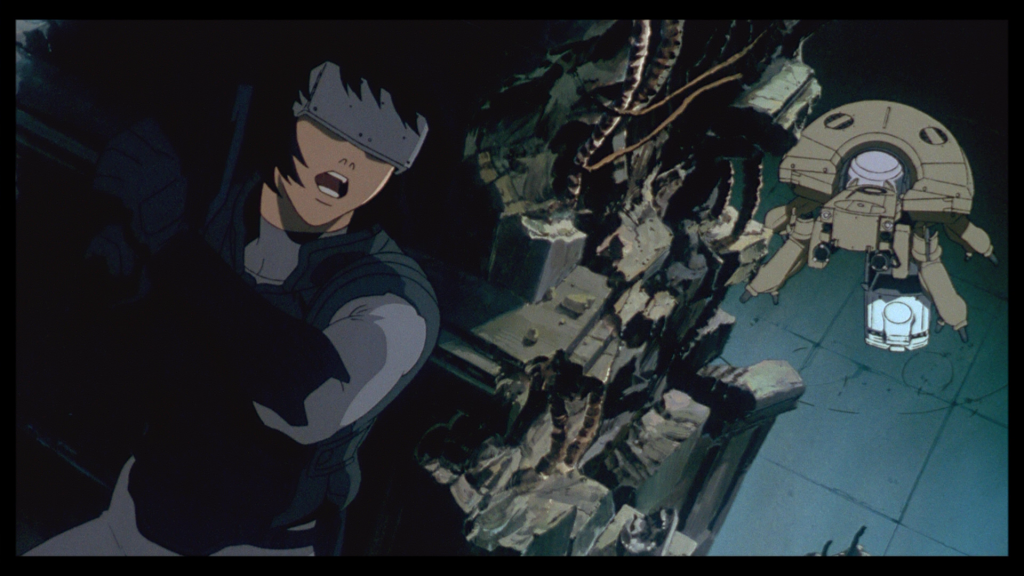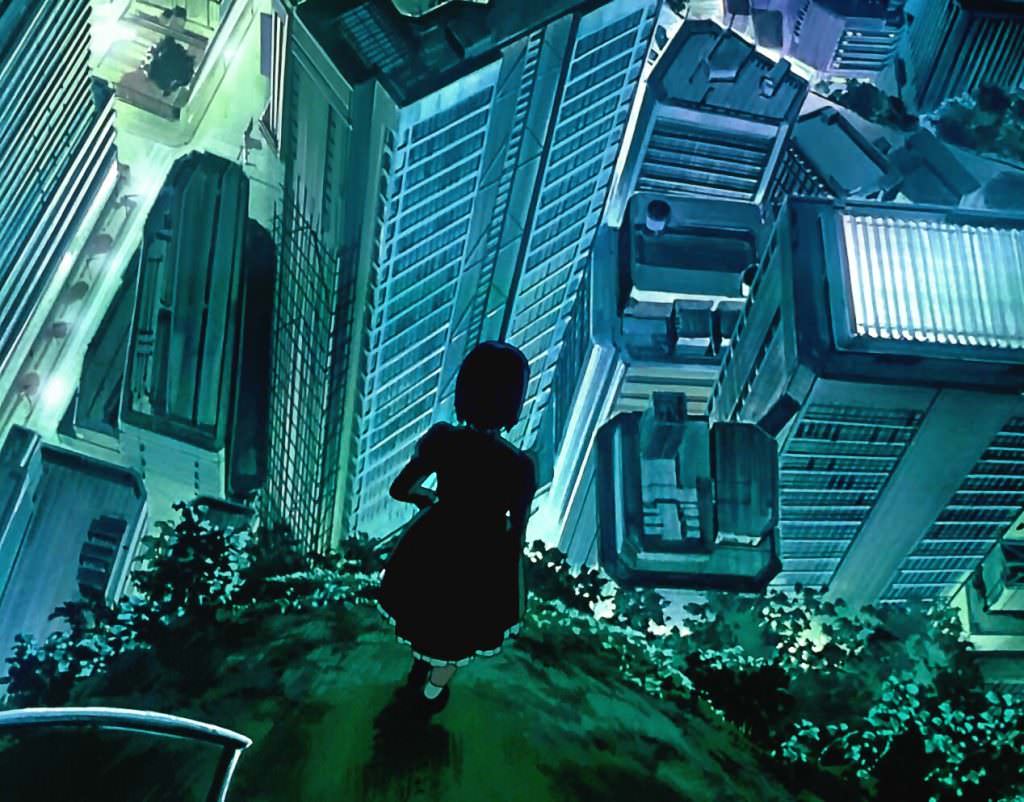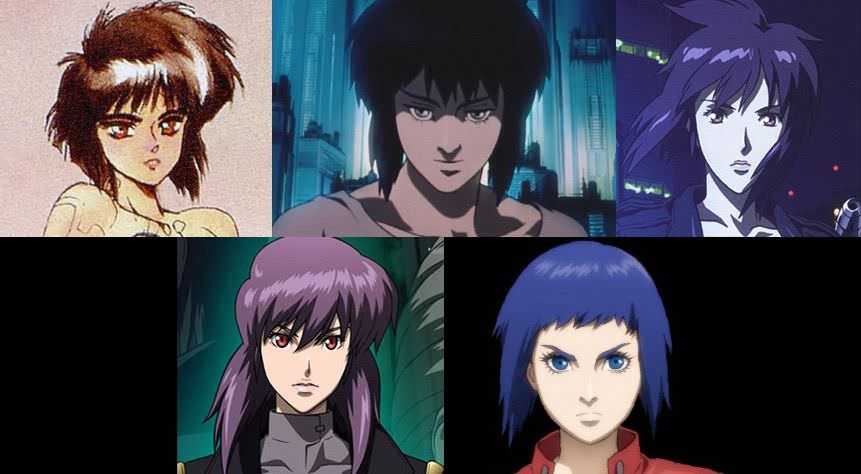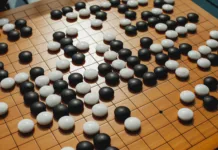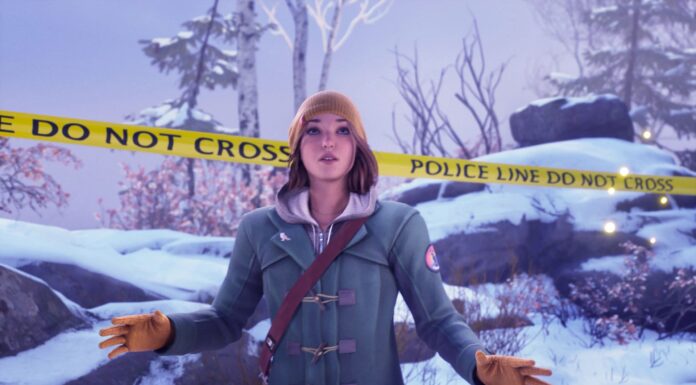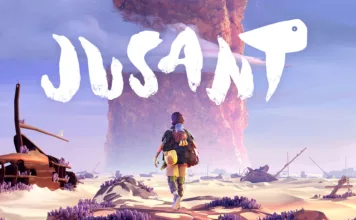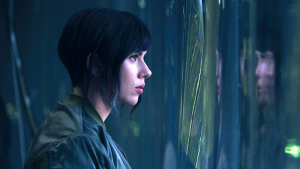 With the recent nontroversy of Scarlett Johansson being cast as Major Motoko Kusanagi for the upcoming Hollywood take on Ghost in the Shell, there’s been a lot of…well, not debate, but second hand “outcry” of it being a case of whitewashing. I’ve heard very little first-hand outrage at her, a white American woman playing a Japanese character, yet there are headlines and tiny “articles” abound making it out to be a hugely offensive transgression.
With the recent nontroversy of Scarlett Johansson being cast as Major Motoko Kusanagi for the upcoming Hollywood take on Ghost in the Shell, there’s been a lot of…well, not debate, but second hand “outcry” of it being a case of whitewashing. I’ve heard very little first-hand outrage at her, a white American woman playing a Japanese character, yet there are headlines and tiny “articles” abound making it out to be a hugely offensive transgression.
But it really, really, is not.
Truth is the publisher and author of the original manga don’t seem to really care, nor do Japanese people in general and – from what I have seen personally – few hardcore English-speaking Ghost in the Shell fans are rattled by Johansson’s race. The reason being is that GitS is a series that breaks traditional boundaries of identity. It’s set in a cyberpunk future that pushes post-modernism so far that ideas of sex, gender, biological evolution, nationality and even ethnicity are undermined and made irrelevant. In a future where you can buy yourself any sort of new body you’d like and private corporations run the world, what good is such a limited view on identity? To fans of the franchise who get that, why should they be upset about Johansson, or any of the rest of the Caucasian cast lest we forget them, playing these characters?
To fully understand why this isn’t such a huge catastrophe and why anybody who isn’t a failed tabloid journalist or, let’s admit, a bandwagon social justice warrior doesn’t see it as a controversy, you need look no further than the first film.
I highly recommend watching it first before reading. Don’t worry if you don’t get it on the first viewing, because it took me about four watches to completely understand everything. And it still leaves me with questions. Spoilers ahead.
GitS is a huge franchise with an impactful legacy. Right up there with William Gibson’s novels, it’s the granddaddy of cyberpunk fiction, and without it we wouldn’t have gotten The Matrix, Deus Ex, or just about any of your favourite cyborg-populated Sci-Fi’s of today. It began life as a manga series in 1989 and went on to spawn multiple animated TV series, video games and films.
The first feature, simply titled Ghost in the Shell, was released in 1995 and instantly became a cult classic in western territories. It’s stunningly animated, beautifully iconic, and perfectly paced in a way that really wants you to stop and think about what you’ve just seen. It is, in the truest sense of the word, a deep piece of cinema. If you’re paying attention, you’re going to be left with some very scary philosophical questions about what makes you, you.
The film opens up with the intertitle “In the near future, corporate networks reach out to the stars. Electrons and light flow throughout the universe. The advance of computerisation, however, has not yet wiped out nations and ethnic groups“. The key word is “yet“.
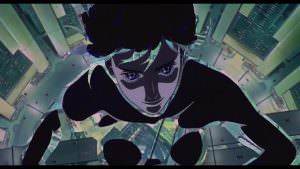 The first scene has the Major drop in on a defection of a computer programmer and assassinate his chaperon, an arms-dealer/diplomat, before he can leave the country. Prior to exploding the diplomat’s head, we see the police force, Section 6, storming the building but finding themselves unable to place an arrest due to some paperwork nonsense, which Section 9, the Major’s squad of clandestine CIA types, circumvent with a bullet. The police squad (keep in mind; they’re both part of the Japanese government) then open fire on her before she disappears before their eyes.
The first scene has the Major drop in on a defection of a computer programmer and assassinate his chaperon, an arms-dealer/diplomat, before he can leave the country. Prior to exploding the diplomat’s head, we see the police force, Section 6, storming the building but finding themselves unable to place an arrest due to some paperwork nonsense, which Section 9, the Major’s squad of clandestine CIA types, circumvent with a bullet. The police squad (keep in mind; they’re both part of the Japanese government) then open fire on her before she disappears before their eyes.
So from the get-go, in the very first scene, we’re in a political, national, ethnic grey zone where departments fire at each other internally; where the left hand doesn’t know what the right is doing; where “peace loving nations”, as the diplomat says, procure programmers like they’re nuclear weapons.
And, oh yeah, there’s cyborg technology everywhere, meaning your own body can have parts replaced by something made in a factory. Individuals are not unique, and the groups they form aren’t steadfast either. By the end of the film, and in all of the political drama happening in the background, this point is repeatedly driven home.
The spine of the film is focused on the Major herself and her investigation of the “Puppet Master”; a supposed hacker guilty of stock manipulation, privacy invasion and cyber terrorism. The assassination incident at the start turns out to be much more entwined with the Puppet Master than is apparent at first, but his (or “its”) connection to the Major and how she reacts to this case is where the deep philosophical questions come in.
 So we’ve established that our bodies aren’t what make us human, neither is our place in our collective groups and countries. What, then, of our memories? Surely our ability to tap into past experience is what tells you that you’re human?
So we’ve established that our bodies aren’t what make us human, neither is our place in our collective groups and countries. What, then, of our memories? Surely our ability to tap into past experience is what tells you that you’re human?
Well, it turns out the Puppet Master can implant memories too. Motoko and pals are tasked with chasing down two of his “puppets” after they attempt to hack into the cybernetic brain of a government official. Cornering them beyond the shanty Hong Kong style markets of dystopic Japan (again, national boarders are blurred in this future), Motoko kicks the shit out of one of them and places them both under arrest. But it’s all for naught as the Puppet Master has implanted false memories into them both.
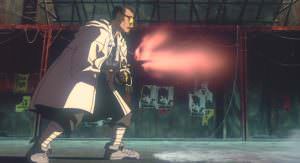 We see one of the poor bastards, who is convinced that he had been separated from his wife and was hacking into her records to see if she had been cheating on him, learn that he never had a wife; he’d been living by himself for 10 years and that the hacks he was pulling off were really acts of espionage. His world shatters before his eyes.
We see one of the poor bastards, who is convinced that he had been separated from his wife and was hacking into her records to see if she had been cheating on him, learn that he never had a wife; he’d been living by himself for 10 years and that the hacks he was pulling off were really acts of espionage. His world shatters before his eyes.
Think on that for a moment; if your body isn’t who you are, and your memories aren’t who you are, what’s left? Is there anything that’s uniquely yours?
Shaken by this, the Major and her partner, Batou, have a moment where she emotionally unloads on him, revealing just how deep her own existential crisis goes.
This take on Motoko Kusanagi is the most dressed down, morose interpretation there is in the entire Ghost in the Shell franchise. And, like all the memorable western comic book heroes, there have been many interpretations of the character and her story for you to pick favourites with. Here it seems like her constant upgrading of her almost entirely robotic body has stripped away most of what she relied on to call herself human. The only biological part of her any more is her brain and a fragment of her spinal chord.
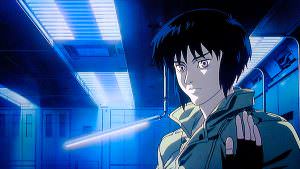 Now addled by doubts about her sense of self and likely verging on committing suicide, she asks herself questions like; “Am I really human, or just a robot that thinks it’s human? Are my memories real? If I leave Section 9 and surrender my government-issued body and sensitive memories, would I really be me any more?” etc.
Now addled by doubts about her sense of self and likely verging on committing suicide, she asks herself questions like; “Am I really human, or just a robot that thinks it’s human? Are my memories real? If I leave Section 9 and surrender my government-issued body and sensitive memories, would I really be me any more?” etc.
Movie Motoko spends a lot of her time naked (or in a transparent invisibility suit), not to titillate the audience, but to remind herself that she’s female. She has no reproductive organs either, meaning she cannot have children if she wants and thus can’t even leave a biological legacy. She’s also the most androgynous take on her character, who usually sports lipstick, long lashes and outfits that are made to titillate. In the movie, the intent is to show a sort of gender or sexual dissociation, because if your sense of self goes away along with your biological body, your sense of gender/sex would surely go with it.
All of this only really comes into play once the Puppet Master makes their appearance, whispering “For now we see through a glass darkly” as an invite to Motoko before the scene fades to black.
A factory seemingly activates itself and creates a robot on its assembly line. Said robot, which looks like a blonde version of Motoko due to her body coming from the same factory, then walks into traffic on purpose and is recovered by Section 9.
The chief of Section 6 (the guy on the right in the above screensho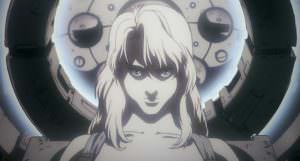 t) arrives and it’s revealed that this whole scenario was orchestrated by them to trap the “Puppet Master” inside a body and arrest him. But, it gets weirder; the Puppet Master is no hacker. Nor is it simply an AI, not any more at least. The Puppet Master (in a male voice) claims it is a new life-form, born on the internet from pure information, and that it allowed itself to be captured on purpose…
t) arrives and it’s revealed that this whole scenario was orchestrated by them to trap the “Puppet Master” inside a body and arrest him. But, it gets weirder; the Puppet Master is no hacker. Nor is it simply an AI, not any more at least. The Puppet Master (in a male voice) claims it is a new life-form, born on the internet from pure information, and that it allowed itself to be captured on purpose…
THIS is when the message, or rather, the big question of Ghost in the Shell comes to the foreground. Suddenly, all of the political, spy-novel exposition doesn’t matter much.
Section 6 stages a fake terrorist attack and attempts to make off with the Puppet Master, trying to cover its tracks before Section 9 can ask it any real questions. Regardless, they manage to figure out that the Puppet Master began as an AI project under Section 6, who used it to embezzle money internally, perform internal espionage and undertake all sorts of politically cannibalistic missions. The programmer being extradited in the first scene was it’s creator. Thus, Motoko and her team are tasked with recovering the body before they get away.
Motoko needs to chase this thing down, not because her boss told her to, but because her ghost – her very soul – is screaming at her to do so. Whatever the Puppet Master is exactly, it can answer all her existential questions. It knows something and it seems to be interested in her specifically.
Cornering the two Section 6 agents and the body containing the Puppet Master in an abandoned natural history museum, she faces down a goddamn tank by herself in what is one of the most poignantly beautiful and iconic action scenes in all of cinematic history. Ingeniously, they demolish our evolutionary tree as they go and Motoko, driven by her will, wrecks her body in a suicidal last-ditch attempt to stop the tank.
Batou saves her at the last second before the tank crushes her brain and kills her, but rather than going home with the Puppet Master as ordered, Motoko has Batou link hers and the Puppet Master’s hardware up so that she can talk with it.
 It explains to her what it is exactly. In this world, not very far from our own future (a mere thirteen years to be specific), where information rules the world, and all sense of ethnicity, gender, age, memory and physicality are no longer fixed, where more and more of the world is becoming automated and governed by machines, a new type of life came into being; The Puppet Master. Something like an angel or a god, it can be everywhere at once as long as there is an internet connection, and in the future, that’s pretty much everywhere.
It explains to her what it is exactly. In this world, not very far from our own future (a mere thirteen years to be specific), where information rules the world, and all sense of ethnicity, gender, age, memory and physicality are no longer fixed, where more and more of the world is becoming automated and governed by machines, a new type of life came into being; The Puppet Master. Something like an angel or a god, it can be everywhere at once as long as there is an internet connection, and in the future, that’s pretty much everywhere.
It asks the now stunned Motoko to merge with it. In this way, it ca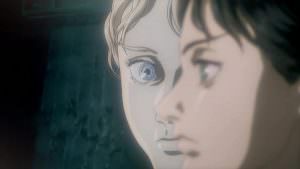 n reproduce (rather than simply copy/paste itself). When they merge, what will be left will be neither the Puppet Master nor Motoko, but a completely new, truly transhuman life form. She will have new meaning in life and all the horror she was facing before will be shook off like a bad case of fleas.
n reproduce (rather than simply copy/paste itself). When they merge, what will be left will be neither the Puppet Master nor Motoko, but a completely new, truly transhuman life form. She will have new meaning in life and all the horror she was facing before will be shook off like a bad case of fleas.
Batou, understandably, is left wondering just what the hell is going on, only concerned with keeping his partner safe. But, Section 6 is sending a clean-up crew of snipers in to destroy both the Puppet Master and Motoko to cover their ass. The shot is fired and we cut to black.
When Motoko (???) awakens, her head put on a child-sized cyborg body no less, she says her goodbyes to Batou and walks off into a new future.
Now, how anyone can watch that film and think the race of the actress slated to play her matters a single bit is baffling and upsetting to me. Hollywood films often whitewash characters of different ethnicities for a variety of truly racist reasons ranging from a lack of diversity in the industry, marketing purposes or just sheer vindictiveness, but in the case of Ghost in the Shell, for anyone to get so hung up on the matter just says to me that the people complaining are the last people who should have any opinion at all. They clearly don’t care about the series to begin with.
Outside of the first film, for instance, Motoko at one point takes on the body of a Middle-Eastern man to lead a rebellion in a foreign country. Given that, like most anime characters, none of her default bodies are particularly Japanese looking anyway, she could visually be a member of any race given both her backstory and the main themes of the series.
The lack of diversity in American cinema is a blight on its culture, and on the larger scale the upcoming feature is sadly just another brick in the wall. But removing this film from its original context, its purpose as a standalone piece of art, and forcing American politics onto a Japanese franchise isn’t much better. It is no one’s place but native Japanese people and the series’ original creators to close the book on the upcoming film.
All of this is nothing to say of the quality of what we’ll be getting in a few months anyway. It may very well be a CGI-addled piece of popcorn filler that completely misses what makes Ghost in the Shell great to begin with. But, well, the series isn’t exactly beyond that in Japan either.
In 2010, Ghost in the Shell 2.0 was released, and wound up being a “digital remaster” of the original film that did worse things to its source material than what George Lucas did to the rereleases of the original Star War trilogy.
In short; they covered up gigantic sections of the amazing 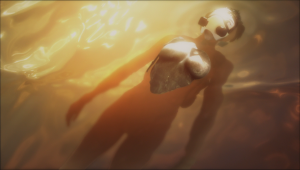 hand-animated sequences with bad PS1 graphics, then colour shifted everything from depressing blue to flypaper yellow. Irreverent and hideous in one fell swoop. Furthermore, other instalments of the franchise have ranged from being utter crap (*coughInnocencecough*), to just alright. Sometimes it’s the deep, existential nightmare like the first film, sometimes it’s a fun robot adventure like Stand Alone Complex. There are many Motokos and many Ghost in the Shells, none of them are sacred.
hand-animated sequences with bad PS1 graphics, then colour shifted everything from depressing blue to flypaper yellow. Irreverent and hideous in one fell swoop. Furthermore, other instalments of the franchise have ranged from being utter crap (*coughInnocencecough*), to just alright. Sometimes it’s the deep, existential nightmare like the first film, sometimes it’s a fun robot adventure like Stand Alone Complex. There are many Motokos and many Ghost in the Shells, none of them are sacred.
Personally, Japanese actress or no, I don’t have high hopes for the Hollywood version given just how god damn literary the anime film was. Subtlety hasn’t been the strong suit of US cinema in the past two decades, and the temptation to take Motoko back to her action babe femme fatale roots is too big a pull. My Ghost in the Shell is the one that makes me stare at the ceiling when it’s over, wondering what makes me me, all while filling me with equal parts dread and wonder over our post-modern age. The action scenes are a bonus.
If you’re to take anything home from the buzz being generated now, it’s that you should seek out the source material and consume that first if you haven’t already. Don’t let your first impression be marred by either nontroversy or ugly Hollywood practices, but don’t prematurely condemn it either.
Whatever happens in the future, let’s keep an open mind. It might turn us into transhuman techno-gods.
